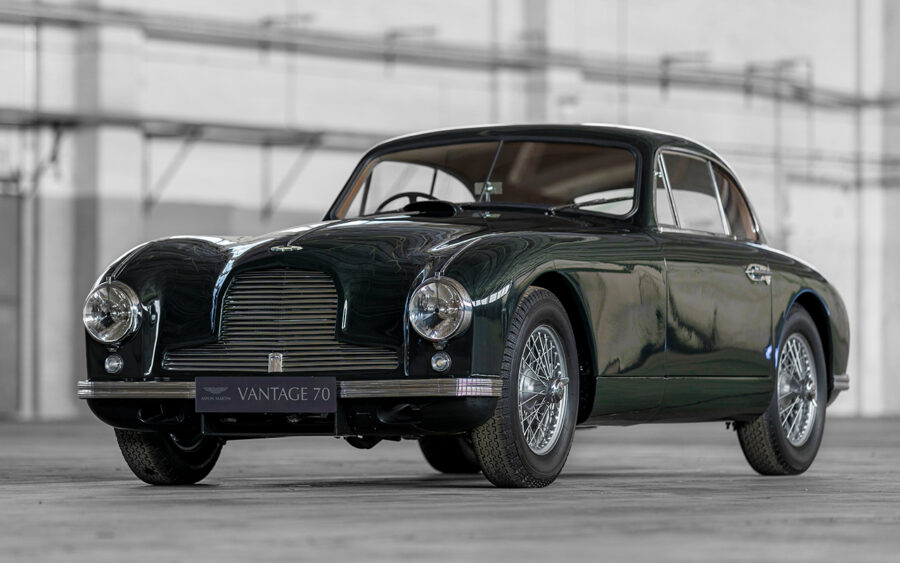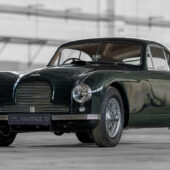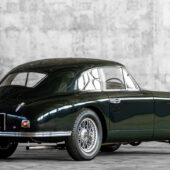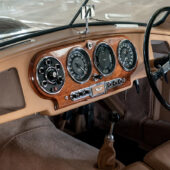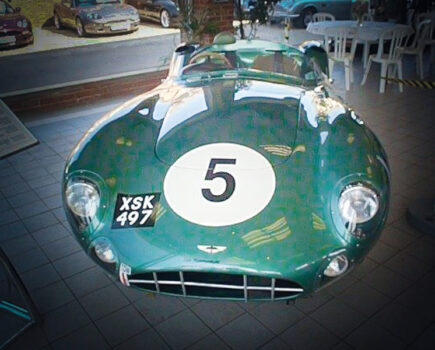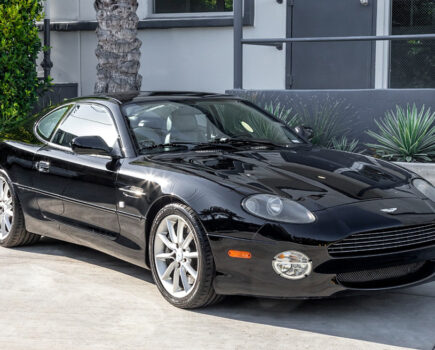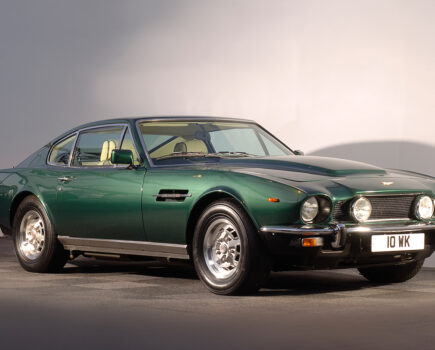The Aston Martin DB2 was a sporty two-door intended to face rivals both on and off the racetrack with its new straight-six engine
Words: Jon Burgess
The DB2 took what made its 2-Litre Sports predecessor great and added a six-cylinder engine to take the fight back to Jaguar. With race-track development feeding directly back into the road cars, Lagonda’s six-cylinder engine began a career all of its own as a result, going on to power three iterations of Aston Martin racing cars. Aston boss David Brown knew that the 2-Litre Sports had potential – but to challenge Jaguar, Claude Hill’s OHV four-pot had to go.
Frank Feeley had transformed the lengthened Atom chassis from a dumpy saloon into a flowing junior Lagonda; to move Aston Martin forwards, a six-cylinder, battle-hardened sports car was the answer. For Le Mans 1949, the DB Mark II debuted; one car was fitted with Lagonda’s prized twin-cam, Wilson/Bentley 2.6-litre straight-six, while the other two had Claude Hill’s four-pot.
Nine inches was taken out of the 2-Litre’s chassis with coils all round, another Hill design; in the Atom, it had proven itself for more than 100,000 miles, as Gordon Sutherland had run it throughout World War Two. Hill’s stout OHV didn’t have quite that mileage on it (it was only fitted in 1944) but one unit finished seventh overall at Le Sarthe. The LB6-engined car, the template for production DB2s, suffered from water pump failure, and the second OHV car crashed on Sunday morning, its driver Pierre Maréchal, dying the next day from his injuries.
Despite the tragedy, Le Mans had been good for the DB Mark II; two prototype DB2s, with reprofiled front wings and a four-inch higher roof were worked up by Feeley, and the model itself appeared publicly at the New York Motor show in April 1950. The next month, production began, with the 2-Litre Sports renamed as the DB1 to provide continuity for the new car.
A two-seater, the DB2 also did without a boot lid, save for a slot to access the spare wheel; luggage had to be placed in the rear via the passenger compartment. Aston offered a column and floor change option for the four-speed David Brown gearbox, and power output from the 2.6-litre LB6 was a respectable 105bhp. A fixed head soon joined the line-up, with production of the car fanned out across the David Brown Group’s West Yorkshire empire. Gearboxes were made at Meltham Mills in Huddersfield, and in 1950, Brown leased a factory complex in Farsley, near Leeds, to build DB2 engines.
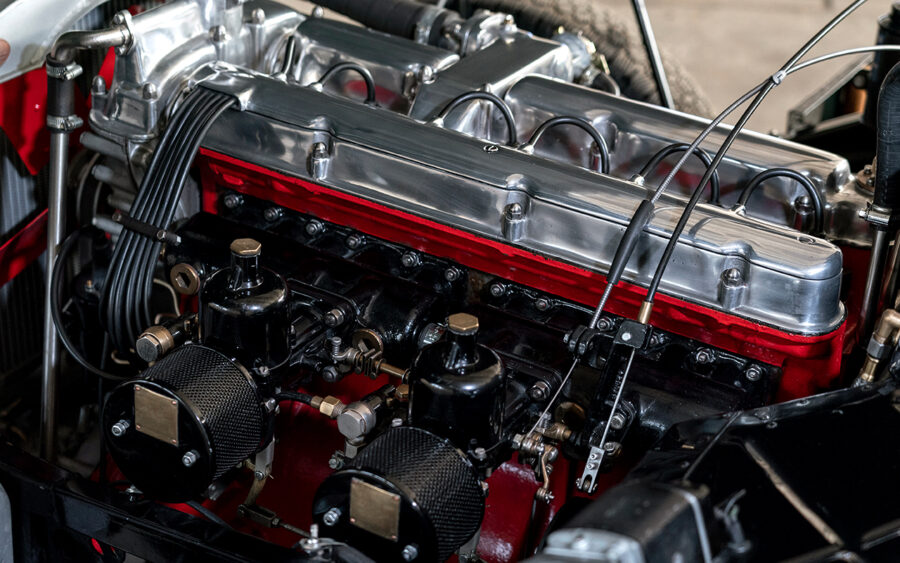
There was more upheaval before the year was out: Claude Hill, upset at the emphasis Brown was placing on the LB6 at the expense of developing his OHV ‘four’ into a ‘six’, left the company. Historians have upbraided Hill for his actions, given that his chassis still underpinned the DB2 (and would continue to serve Aston, in the DB Mark III, until 1959). Harold Beach, later technical director would replace Hill, leaving it with a chassis legacy that would last from the DB4 until the Vantage in 2000.
Two other major appointments were made that year – Team Manager, John Wyer, joined Aston to co-ordinate its racing activities, as well as Dr Robert Eberan von Eberhorst, previously of Auto Union, ERA, and Jowett, for his services in building a bespoke competition car.
Not that the DB2 didn’t have work to do: three works team cars, all with LB6 engines, went to Le Mans in 1950. George Abecassis and Lance Macklin finished 5th; Charles Brackenbury and Reg Parnell, managing 6th, won Aston Martin 1st and 2nd in class. Across the Atlantic, Briggs Cunningham drove his DB2 to 2nd in its class at the inaugural Sebring race meeting in December 1950.
The DB3 that resulted from Eberhorst’s appointment didn’t perform as expected, owing mainly to its weight; its failures, however, helped make the DB2 a better car. In the interim, John Wyer had two DB2s pulled off the line in 1951, lightened and sent out to race in the DB3’s place; they were more than 150kg lighter than standard. Returning to Le Mans, they placed 3rd and 5th in class.
Willie Watson, the LB6’s co-designer, alongside WO Bentley, expanded the engine to 3.0-litres as an early role as Aston’s chief designer, which he accepted in 1952. Breakages were frequent, but the lessons learned were harsh enough for a production variant, the 140bhp VB6/J, to be offered in the four seat, DB2/4, now with a one-piece windscreen a boot lid, full bumpers, and headlights two inches higher than the DB2’s. Introduced in 1953, the DB2/4 was a revelation; an early example of the hatchback, its tiny rear seats, which straddled the back axle, turned the car into a tight 2+2. It did with a standardised version of the DB2 Vantage’s 125bhp, 2.6-litre engine until 1954, when the 3.0-litre, 140bhp, DB3-derived VB6/J came on stream.
Available once again as a drophead coupe, the DB2/4 was extensively rebodied by external coachbuilders. Serra and Graber were quick to reclothe the DB2; for the DB2/4, Allemano and Vignale built special bodies, with Bertone creating a Berlinetta, spider, and two versions of the drophead coupe, eight of which were created on behest of industrialist, Stanley ‘Wacky’ Arnolt.
Between 1952 and 1953, Watson also redesigned the DB3’s chassis. With a revised Frank Feeley body, the DB3S was nearly 80kg lighter than its unsuccessful predecessor, competing in various series until 1956.
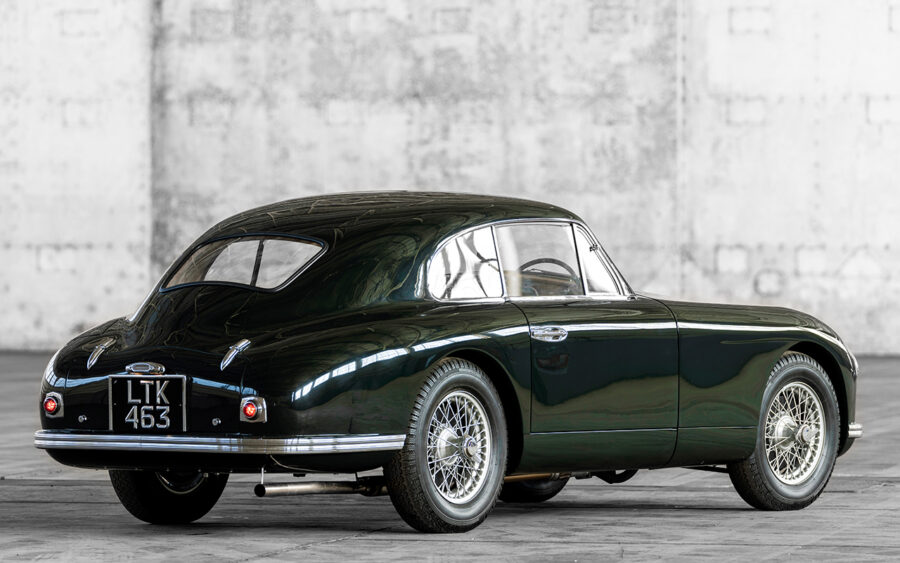
Aston Martin DB2 timeline
1949
Development work begins on the new DB Mark II (or Le Mans Fixed Head Cars), used as the basis for the DB2 complete with a shortened Claude Hill chassis, a double-overhead cam 2.6-litre Lagonda LB6, and a fastback Frank Feeley body. Three cars are sent to Le Mans; one finishes.
1950
Production of the 2-Litre Sports makes way for the new DB2 saloon in May, following a very positive reception at April’s New York Auto Show; a split-windscreen two-seater, sans boot lid and with a body similar, but not identical, to the DB Mark II from which it was developed. Team Manager, John Wyer, was recruited, as was Dr Robert Eberan von Eberhorst, to manage and build a dedicated racing car, the DB3; development commences this year. 2-Litre Sports named ‘DB1’ in retrospect as the DB2 arrives.
Claude Hill, disappointed with the decision to not develop his OHV four-pot engine, leaves and is replaced with Harold Beach, who would later become Aston’s technical director.
Production of the new car is fanned out across the David Brown empire in West Yorkshire; components return to Feltham for assembly. Team Cars placed highly in class at that year’s Le Mans 24 Hours, taken directly from the production line.
A drophead coupe joins the saloon a few months after launch; 102 were built, five of these as bare chassis cars to be rebodied by external coachbuilders.
1951
125bhp Vantage option offered; ‘washboard’, three-piece grille, after 49 cars, replaced after 49 cars with a horizontal bar type. With the DB3 delayed, two cars are gutted and become Team Cars for the 1951 season, commissioned by team manager, John Wyer. Spanish coachbuilder, Pedro Serra, rebodies a 1951 DB2 into a convertible. DB3 tests at MIRA later in the year.
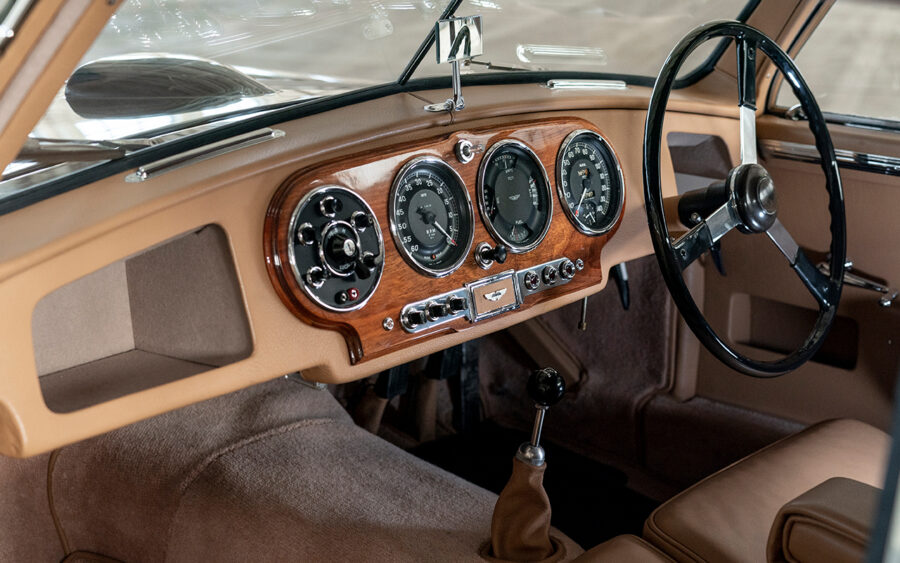
1952
The DB3 arrives, with a custom-built chassis, an uprated 3.0-litre version of the LB6 (by one of its original designers, Willie Watson, who joined Aston as chief designer the same year), and a De Dion rear end. It proves underwhelming and, after an unimpressive 1953 season, is dropped. Data used from the project helps create the VB6/J engine used in the DB2/4, however.
Swiss coachbuilder, Graber, rebodies at least three chassis into droptop body styles.
1953
DB3 retired from racing; its chassis is modified and lightened by Willie Watson to become the DB3S.
DB2 production wound down – 411 cars built. Eberan von Eberhorst leaves Aston Martin for Auto Union.
Thoroughly revised, four-seat DB2/4, with an opening rear hatchback tailgate and a 125bhp engine (1951 Vantage VB6/E specification) arrives in October; drophead coupe offered a few months later. Tickford now part of Aston Martin. Mulliner of Birmingham, builders of DB2/4 bodies, produces a one-off fixed head coupe.
1954
3.0-litre version of the LB6, announced in the last minutes of 1953, the 140bhp VB6/J, developed from the DB3 programme, arrives in the summer, and becomes standard fitment. Tadek Marek, chief engineer, joins Aston Martin from Austin to further develop the LB6 with Harold Beach, future technical director. First DB4 prototype – the Harold Beach chassied, and Frank Feeley styled DP114/2 is built.
1955
Thoroughly redesigned DB2/4 Mark II, built by contract with Mulliner, goes into production in October, replacing the DB2/4, of which 565 were produced; 73 of those were drophead coupes. Draughtsman Ted Cutting, promoted to chief designer for racing cars, begins work on the DB3S replacement, the DBR1. Three DB2/4s take part in the 1955 Monte Carlo Rally, testing front disc brakes on the DB2 chassis for the first time.

